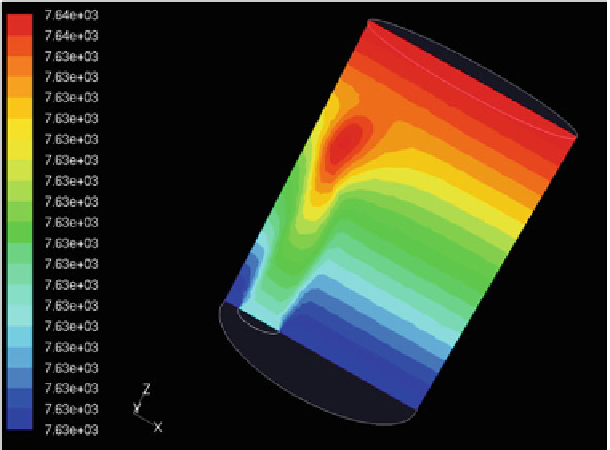Environmental Engineering Reference
In-Depth Information
Fig. 5
Distribution of the kinetic energy in the entire ladle system for the same model of previous
figures. The
colour-scale bar
and numbers on the left border indicate the values of the kinetic energy
in units of g m
2
s
−
2
4 Conclusions
In this paper, we have presented numerical simulations of two-phase flows in a scaled
air-water model of an industrial gas-stirred ladle using the
FLUENT 6.3
code. We
find that the intensity of agitation and turbulence in the ladle increases by increasing
the gas flow rate at the nozzle exit. As expected, an eccentric gas blowing improves
the mixing as it enforces the reduction of inactive flow regions, or dead zones, just
below the recirculating liquid flow at the bottom of the ladle. In addition, changing
the diameter of the porous plug hardly affects the flow pattern as the rising of the
gas bubbles is dominated by inertial forces near the nozzle exit and by gravitational
forces at higher heights. The results are in excellent agreement with experimental
observations of eccentric gas injection models as well as observations and numerical
calculations of plume development and behaviour.
References
Aoki J, Thomas BG, Peter J, PeasleeKD (2004) Experimental and theoretical investigation ofmixing
in a bottom gas-stirred ladle. In: Proceedings of the association for iron and steel technology
(AISTech 2004), vol I, pp 1045-1056
Balaji D, Mazumdar D (1991) Numerical computation of flow phenomena in gas-stirred ladle
systems. Steel Res 62(1):16-23

Search WWH ::

Custom Search